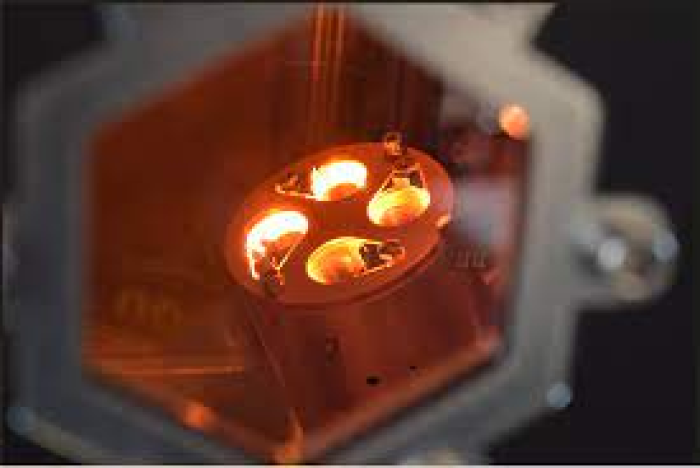Evaporation
Vacuum evaporation coating is a kind of vacuum coating method in which the evaporated material is heated by evaporator under vacuum condition to sublimate it. The evaporated particles flow directly onto the substrate and deposit on the substrate to form a solid film, or to heat the evaporation coating material.
The physical process is that the material is evaporated and transported to the substrate and deposited into film. The physical process is as follows: the material is converted into heat energy by several energy sources, and then evaporated or sublimated by heating the plating material to form gaseous particles (atoms, molecules or atomic clusters) with certain energy (0.1 ~ 0.3ev); After leaving the surface of the plating material, the gaseous particles with considerable motion velocity are transported to the substrate surface in a straight line basically without collision; the gaseous particles arriving at the substrate surface agglomerate and nucleate and grow into solid films; the atoms of the film are rearranged or chemically bonded.
In order to escape atoms or molecules from the surface of liquid or solid plating materials, enough heat energy and enough thermal movement must be obtained. When the kinetic energy of the velocity component of the vertical surface is enough to overcome the energy of mutual attraction between atoms or molecules, it can escape from the surface and complete evaporation or sublimation. The higher the heating temperature is, the greater the molecular kinetic energy is, and the more particles are evaporated or sublimated. Evaporation process continuously consumes the internal energy of the plating material. In order to maintain evaporation, it is necessary to continuously replenish the heat energy of the plating material. Obviously, the evaporation amount (expressed as the vapor pressure above the plating material) is closely related to the heating (temperature rise) of the plating material. Therefore, the growth rate of the coating is closely related to the evaporation rate of the plating material.
Some of the evaporated particles are reversed and the other part is adsorbed. The adsorbed atoms diffuse on the surface of the substrate, resulting in two-dimensional collision between the deposited atoms, forming clusters, some of which stay on the surface for a period of time and then evaporate. Clusters collide with diffusion atoms, or adsorb or release single atoms, which is repeated. When the number of atoms exceeds a certain critical value, it becomes a stable nucleus, and then continuously adsorbs other and compound atoms and gradually grows up. Finally, it merges with the adjacent stable nuclei and becomes a continuous membrane.


